-
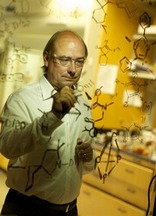
Guy Bertrand
University of California,
San DiegoGuy Bertrand studied chemistry at the University of Montpellier and received his PhD from the University Paul Sabatier in Toulouse. After being a CNRS group leader (French National Center for Scientific Research) at the University of Toulouse, and then at the Laboratoire de Chimie de Coordination du CNRS, he has been the Director of the Laboratoire d'Hétérochimie Fondamentale et Appliquée at the University Paul Sabatier from 1998 to 2005. From 2001 to 2012 he served as the Director of the UCR/CNRS Joint Research Chemistry Laboratory, and since July 2012 he is Distinguished Professor and Director of the UCSD/CNRS Joint Research Chemistry Laboratory at the University of California at San Diego. He is a member of the French Academy of Technology (2000), the Academia Europaea (2002), the European Academy of Sciences (2003), the French Academy of Sciences (2004), and is a Fellow of the American Association for Advancement of Sciences (2006). He has recently received the Sir Ronald Nyholm Medal of the RSC (2009), the Grand Prix Le Bel of the French Chemical Society (2010), and the ACS Award in Inorganic Chemistry (2014). He is one the Associate Editors of Chemical reviews, and a member of the Editorial Board of several journals.
-
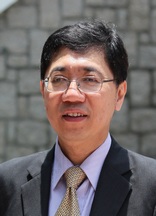
Chi-Ming Che
The University of Hong Kong
Prof. Chi-Ming Che [B.Sc. (1978) and Ph.D. (1982) from The University of Hong Kong (HKU)] studied at the California Institute of Technology from 1980 to 1983. He then joined the Department of Chemistry at HKU and is now Dr Hui Wai-Haan Chair Professor of Chemistry and Director of State Key Laboratory of Synthetic Chemistry and HKU-CAS Joint Laboratory on New Materials. Prof. Che is a member of Chinese Academy of Sciences and a Foreign Associate of National Academy of Sciences, USA. He has received the First Class Prize of the State Natural Science Award of China and the Royal Society of Chemistry Centenary Prize. He has a current H-index of 93 and is listed as one of the ISI Highly Cited Researchers. Over 130 Ph.D. students have successfully completed their studies at HKU under his supervision. His research interests include inorganic and organic synthesis, metal-ligand multiple bonds, metal-catalyzed organic transformations, organometallic and inorganic photochemistry, luminescent materials and inorganic medicines.
-
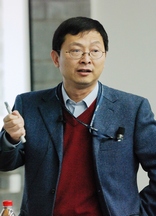
Song Gao
Peking University
Song Gao got his BS and PhD in chemistry at Peking University (PKU) in 1985 and 1991, respectively, then worked at PKU till now. He was a Humboldt Research Fellow in TH Aachen in 1995-1997. He has been Cheung Kong Professor in College of Chemistry and Molecular Engineering at PKU since 2002, and served as dean of this college in 2006-2010. He is now PKU Vice President and Provost, and deputy director of Beijing National Laboratory for Molecular Sciences. He was elected as member of Chinese Academy of Sciences in 2007. In the same year, he became a Fellow of the Royal Society of Chemistry. In 2013 he was elected as TWAS Fellow. He is member of Editorial Advisory Board for Chem. Soc. Rev., Chem. Sci. etc., Editor-in-Chief of Inorg. Chem. Front., and Associate Editor of Nat. Sci. Rev. His research interests are coordination chemistry; molecular nanomagnets; molecular and crystal engineering; multifunctional molecular materials.
-
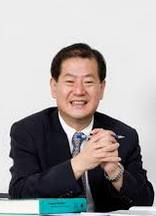
Wonwoo Nam
Ewha Womens University
Wonwoo Nam was born in Seoul, Korea. He received his B.S. (Honors) degree in Chemistry from California State University, Los Angeles and his Ph.D. degree in Inorganic Chemistry from UCLA under the direction of Professor Joan S. Valentine in 1990. After one year postdoctoral experience at UCLA, he became an Assistant Professor at Hong Ik University in 1991. He moved to Ewha Womans University in 1994, where he is presently a Distinguished Professor of Ewha Womans University and a director of Center for Biomimetic Systems. His current research focuses on the mechanistic studies of dioxygen activation and formation by biomimetic models of heme and nonheme iron monooxygenases and Photosystem II. His research activities have been highly recognized; for example, he has been the recipient of many awards and an invited speaker at international meetings. He has been active in organizing or helping to put together international conferences. He is also devoted to the Society for Biological Inorganic Chemistry (SBIC) as an elected general secretary. He serves as an Associate Editor of Chemical Science (RSC) and as an Editorial Advisory Board member for a number of journals.
-
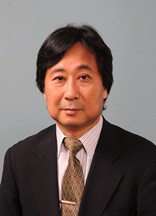
Hiroshi Nishihara
The University of Tokyo
Hiroshi Nishihara received his B. Sc. degree in 1977, M. Sc. in 1979 and D. Sc. in 1982 from The University of Tokyo. He was appointed research associate of Department of Chemistry, Faculty of Science and Technology at Keio University in 1982, and he was promoted lecturer in 1990, and associate professor in 1992. Since 1996, he has been a professor of Department of Chemistry, School of Science at The University of Tokyo. He also worked as a visiting research associate of Department of Chemistry at The University of North Carolina at Chapel Hill (1987-1989), and as a researcher of PRESTO, JRDC (1992-1996). He received Young Scholar’s Lectureship, The Chemical Society of Japan in 1994, The Chemical Society of Japan Award for Creative Work in 2003, Docteur Honoris Causa from University of Bordeaux in 2011, and Commendation for Science and Technology by the Minister of Education, Culture, Sports, Science and Technology in 2014. His research has been focused on creation of new electro- and photo-functional materials comprising both transition metals and π-conjugated chains, and invention of unidirectional electron transfer systems utilizing molecular layer interfaces.
-
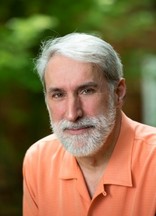
Daniel G. Nocera
Harvard University
Daniel G. Nocera is the Patterson Rockwood Professor of Energy at Harvard University. He is widely recognized for his efforts in renewable energy. His group has performed pioneering studies to elucidate the basic mechanisms of energy conversion in biology and chemistry, with a particular focus on multielectron transformations and the coupling of protons to electron transfer. On the foundation of this science, he recently accomplished a solar fuels process that captures the elements of photosynthesis and has now translated this science to produce the artificial leaf, which was named by Time Magazine as Innovation of the Year for 2011. Nocera is a member of the American Academy of Arts and Sciences, the U.S. National Academy of Sciences and the Indian Academy of Sciences. He was named as 100 Most Influential People in the World by Time Magazine and was 11th on the New Statesman’s list on the same topic. He founded Sun Catalytix, a company to develop energy storage for the wide-spread implementation of renewables. In August 2014, Lockheed Martin purchased the assets of Sun Catalytix, and Nocera’s energy storage technology is now being commercialized under the new venture, Lockheed Martin Advanced Energy Storage, LLC.
-

Peter J. Sadler
University of Warwick
Peter Sadler obtained his BA, MA and DPhil at the University of Oxford. Subsequently he was a Medical Research Council Research Fellow at the University of Cambridge and National Institute for Medical Research. From 1973-96 he was Lecturer, Reader and Professor at Birkbeck College, University of London, and from 1996-2007 Crum Brown Chair of Chemistry at the University of Edinburgh. In June 2007 he took up a Chair in Chemistry at the University of Warwick and was Head of Department for 3 years. He is a Fellow of the Royal Society of Edinburgh (FRSE) and the Royal Society of London (FRS), a European Research Council Advanced Investigator, EPSRC RISE Fellow, and Mok Hing-Yiu Distinguished Visiting Professor at the University of Hong Kong. Recently he was Marlies and Hans Zimmer International Scholar at the University of Cincinnati, Davison Lecturer at MIT, Distinguished Lecturer at Roger Williams University, Rhode Island, Glenn Seaborg Lecturer at the University of California, Berkeley, Australian Academy of Science Selby Fellow, and Swiss Chemical Society Lecturer.
His research interests are centred on the coordination chemistry of metals in medicine, in particular on the design of catalytic organometallic anticancer complexes, photoactivated chemotherapeutic agents, and studies of the dynamics of precious metals at atomic resolution.



